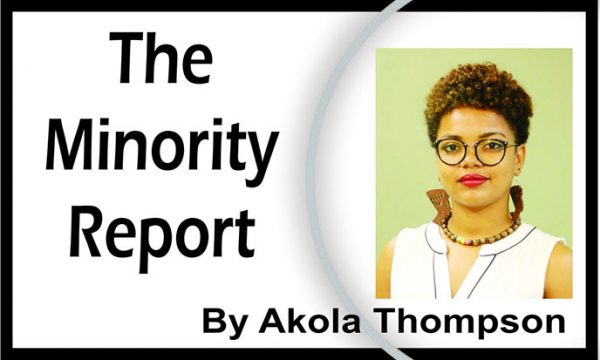 Black hair has long been a contentious issue in Guyana. While we can frequently hear that hair is just hair, hair and texture discrimination is a very real issue that plagues Black persons, especially Black women and girls.
Black hair has long been a contentious issue in Guyana. While we can frequently hear that hair is just hair, hair and texture discrimination is a very real issue that plagues Black persons, especially Black women and girls.
The conversation regarding the restrictions that are often placed on Black hair reached the national level in 2022 when the Ministry of Education (MoE) relaxed the school rules for International Women’s Day. Rightly, many criticisms were levelled against the move that was seen as performative at best, given that after that one empowering hair day, students would have to return to the regular standard of having their hair scrutinised and criticised. While the MoE as a body does not institute rules about a student’s appearance, it would be disingenuous to say that its history of turning a blind eye towards its impact has not shaped the culture and ease with which schools’ management creates and maintains these mandates.
Following the large public conversation that could not be ignored, the MoE began consultations and research into the impacts of the hair rules. The research which analysed hair rules in schools across the country, took into account teacher, parent and wider public perceptions. The research was completed by Martina Johnson. One of the main findings of the research found that “there is an urgent need to change the historical and current expectation in our schools that kinky/curly hair and hairstyles should be modified or altered to comply with a Western standard to be deemed neat and tidy and acceptable.”
It is apparent that while hair rules are often explained as being general modifications of students’ appearance to ensure uniformity, the reality is that these rules primarily impact Black boys and girls, with the latter facing the brunt of its impact. Within the report, it was noted that the basis of the hair rules might not have been racially motivated but its impacts are undeniable, which I think is an interesting point. The report looks at the non-uniformity of these rules across schools and regions, with “some schools having an outright ban of all hairstyles that are culturally afro-Guyanese (African) hairstyles such as afros, twists, puffs, muffs, braids and cornrows.”
The narrative often put forward is that schools just want students to be neat and tidy, which is actually a euphemism that many Black women and girls have come to realise means that their natural hair must be relaxed, slicked down and free from all kinks. The impacts of these expectations cause immense harm on the psyche and self-expression of persons whose hair grow up rather than down. One parent providing feedback on the research into the hair rules shared that she “was so worried about the school rules, she prayed that her children do not inherit their father’s coily/kinky hair type.” Think about the psychological impacts of that not only on parents who would’ve had to go through similar school and societal experiences where they were penalised for their hair, but also on children whose hair does not adhere to acceptable texture and standard. We keep sending messages to Black children that they are not good enough as is, and that is an incredibly harmful stance to be maintained by our nation’s schools.
It is important to acknowledge the genesis of our education system and where these anti-Black beliefs and practices stemmed from. Largely education in Guyana emanated from religious institutions that primarily catered to white populations. As we progressed, concessions were made for freed people to attend schools. Of course, this meant a strict adherence to the expected standard of grooming that planted and further cemented anti-Black rules within the education system. We have not strayed too far from its genesis, and it would be disingenuous to say that the school rules, (as well intentioned as one might believe them to be), are not racially based as it directly stems from our colonial inspired history of anti-Blackness.
Amongst the recommendations of the research, was the proposal for laws of protection for afro hair to be implemented. Laws such as the USA Crown Act and the UK Halo Code, which prohibits discrimination based on hair in educational, work and social settings can be great frameworks to be adapted for our context. It is great that we have research being done and data being collected on these issues as it is an area in which we have largely been lacking. The reliance on on-the-ground knowledge has led to limited policy actions. It is hoped that this research is utilised to create specific policies aimed at addressing hair discrimination in schools, and even as a wider framework for it in the workplace.




